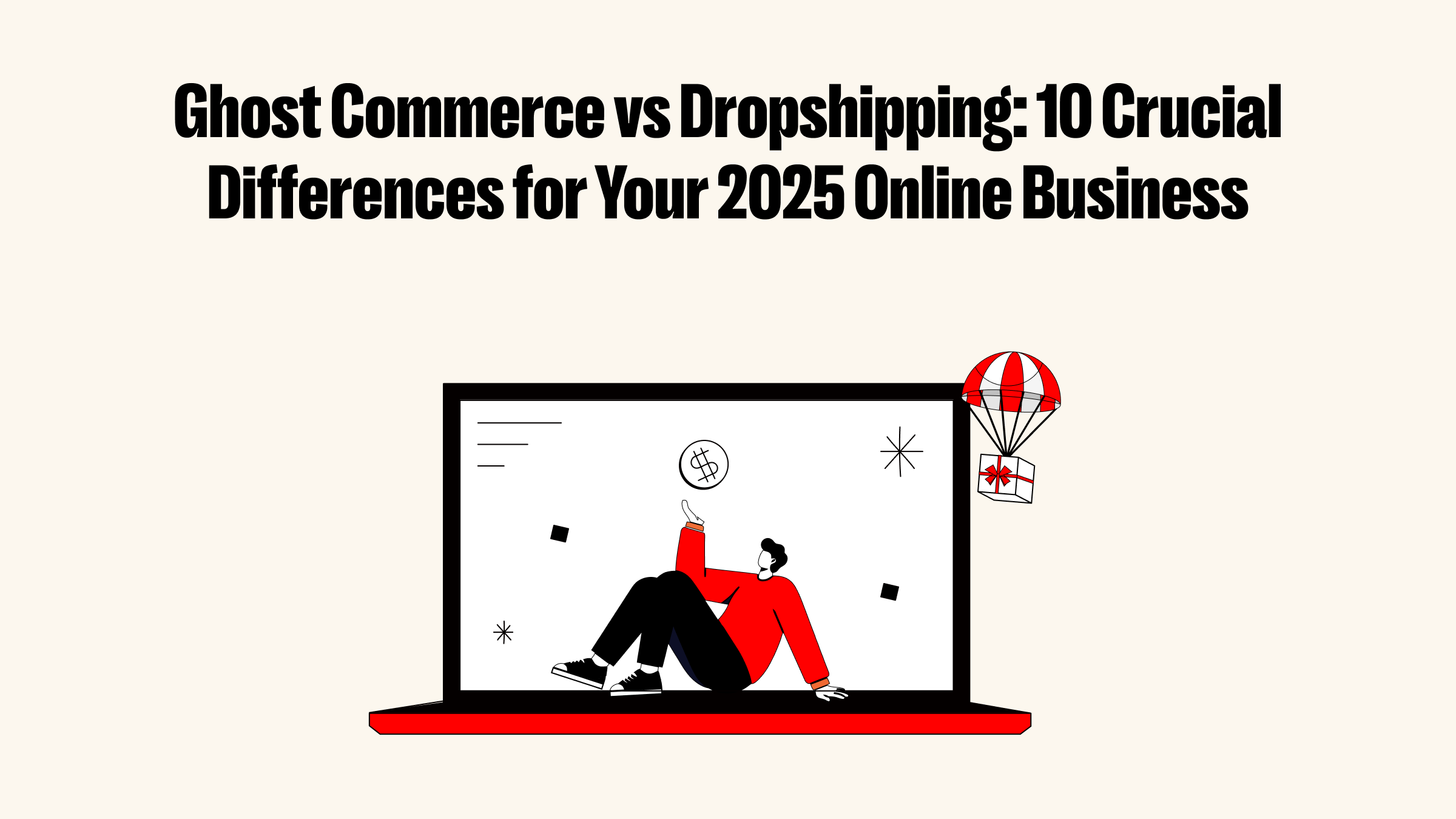Understanding the T86 Policy and Its Impact

What Is the T86 Policy?
Historical Background and Evolution
Why Was the T86 Policy Cancelled?
-
Trade Protectionism: The U.S. government, particularly under the Trump administration, has been increasingly concerned about trade deficits and the impact of foreign competition on domestic industries. The policy was seen as a loophole that allowed foreign companies, especially from China, to undercut American businesses by selling low-cost goods.
-
Revenue Loss: The U.S. government argued that the T86 policy led to significant revenue losses due to the large volume of duty-free imports. With the rise of e-commerce, the number of low-value shipments surged, and the government felt it was missing out on potential tax revenue.
-
Customs Enforcement Challenges: The rapid increase in the volume of small packages made it difficult for customs officials to effectively enforce regulations and prevent illegal activities such as the smuggling of contraband. The policy cancellation was partly a response to these enforcement challenges.
-
Political Pressure: There was significant pressure from U.S. businesses and lawmakers who claimed that the policy was being exploited by foreign companies to gain an unfair competitive advantage. This led to calls for policy changes to protect domestic industries and jobs.
How the Policy Change Affects Global Sellers

Impact on U.S.-Based Sellers Importing from Mainland China or Hong Kong
For U.S. businesses sourcing goods from Mainland China or Hong Kong, the April 2025 policy changes present formidable challenges, potentially threatening the viability of established business models.
-
Financial Impact (Severe): The most significant blow is the dramatic increase in the cost of goods sold (COGS). The elimination of the $800 de minimis threshold means previously duty-free small shipments are now subject to the full weight of applicable tariffs. For most products from China/HK, this means a combined tariff rate of approximately 145% or higher, stemming from the stacking of the 20% IEEPA tariff, the 125% reciprocal tariff, and any applicable Section 301 duties. This massive increase directly compresses margins, making profitability extremely difficult, especially for businesses selling low-margin or price-sensitive goods. Beyond tariffs, sellers face higher operational costs associated with formal customs entries, which may necessitate hiring customs brokers, paying additional fees, and potentially posting bonds. The combination of these factors represents a fundamental shift in the unit economics for importing from China/HK. For many businesses heavily reliant on this sourcing channel, particularly those competing on price, the cumulative burden may prove insurmountable without radical adjustments.
-
Operational Impact (Significant Disruption): The shift away from simplified entry procedures like Type 86 or release from manifest towards formal consumption entries introduces significant operational friction. Formal entries require more detailed documentation, including accurate Harmonized Tariff Schedule (HTSUS) codes and comprehensive product descriptions, increasing the administrative burden. This heightened scrutiny inevitably leads to longer customs processing times and a greater risk of delays, potentially impacting inventory availability and customer delivery expectations. Managing these complexities requires enhanced internal processes or reliance on third-party logistics providers and brokers adept at navigating the new requirements.
-
Strategic Imperatives: Survival necessitates immediate and decisive strategic action. The most critical step is urgent supply chain diversification. Sellers must actively seek and vet alternative suppliers in countries not subject to the prohibitive China-specific tariffs, exploring options in USMCA partner countries (Mexico, Canada) or regions subject only to the 10% baseline tariff. This is not a simple task and requires significant time and investment. Concurrently, a thorough review of pricing strategy is essential. Sellers must determine whether they can absorb any portion of the cost increases, pass them onto consumers (risking demand destruction, as seen with platforms like Temu and Shein announcing price hikes ), or discontinue certain product lines altogether. Exploring duty mitigation strategies is also crucial. This could involve tariff engineering (ensuring correct HTS classification), utilizing the First Sale rule for valuation where applicable (though this requires specific multi-tiered transaction structures), or leveraging Foreign Trade Zones (FTZs) or bonded warehouses for duty deferral or potential reduction on bulk imports. Finally, inventory management strategies must adapt to account for potentially longer lead times and shifts in consumer demand due to price changes.
Impact on U.S.-Based Sellers Not Importing from Mainland China or Hong Kong
While not facing the extreme pressures of competitors sourcing from China/HK, these U.S.-based sellers are still impacted by the broader tariff changes and must navigate a shifting competitive landscape.
-
Financial Impact (Moderate but Broad): The primary direct impact is the 10% baseline reciprocal tariff applied to most imports effective April 5. Unless sourcing exclusively from USMCA partners, exempt categories (like Annex II products or the temporarily exempt electronics), or domestically, these sellers will see an increase in their COGS. They must also remain vigilant about the potential reinstatement of higher, country-specific tariffs (e.g., 20% for the EU, 46% for Vietnam) after the 90-day pause ends on July 9, which could further impact their costs if sourcing from those regions. Additionally, even sellers sourcing domestically may face indirect cost increases if their U.S. suppliers rely on imported components now subject to tariffs. While these cost pressures are less severe than those faced by China importers, the broad nature of the 10% baseline tariff acts as a general tax on imports, potentially contributing to wider inflation and impacting margins across many sectors.
-
Operational Impact (Minimal Direct Change): For sellers whose supply chains do not involve China/HK, the operational aspects of importing remain largely unchanged in the short term. They continue to use established customs procedures. However, they should be aware of potential future changes to customs processes, such as the proposed enhancements building on Entry Type 86 tests, which could affect all imports eventually.
-
Strategic Opportunities & Considerations: The difficulties faced by competitors heavily reliant on China/HK create potential openings. These sellers may gain a competitive advantage due to their relatively lower cost increases and more stable supply chains. This could translate into opportunities for market share gains as consumers potentially shift away from higher-priced goods previously sourced from China. There is an opportunity to emphasize origin ("Made in USA," "Sourced from Europe," etc.) as a value proposition. These sellers might also find they have more pricing power relative to heavily impacted competitors. However, risk monitoring remains essential. The 10% baseline tariff could increase, paused country-specific tariffs affecting their supply chain could be reinstated, or broader protectionist measures could be implemented. A careful assessment of their own supply chain's vulnerability to existing and potential future tariffs is warranted. Their advantage is relative, not absolute, in an environment where overall import costs are rising.
Impact on Sellers Outside the U.S. Importing from Mainland China or Hong Kong (for U.S. Sales)
This group, particularly those utilizing direct-to-consumer (DTC) shipping models from China/HK to the U.S., faces a fundamental disruption to their ability to access the U.S. market competitively.
-
Financial Impact (Severe for U.S. Market Access): The elimination of the Section 321 de minimis exemption for their China/HK-origin shipments is catastrophic for low-value DTC models. What was previously a duty-free entry now incurs either the prohibitive postal duties (120% ad valorem or $100-$200 per item) or, for non-postal shipments, the full stacked tariffs of ~145%+. This effectively erases the cost advantage that allowed platforms like Shein and Temu to compete aggressively on price in the U.S.. For sellers who import inventory in bulk into the U.S. before fulfilling orders (e.g., using a U.S. 3PL), they face the same ~145%+ tariff burden as U.S.-based importers, drastically increasing their landed costs for the U.S. market. The very foundation of the popular, low-cost cross-border e-commerce model directly from China/HK manufacturing hubs into the U.S. market has been dismantled by these changes.
-
Operational Impact (Significant Realignment Needed): The traditional DTC cross-border shipping method from China/HK to U.S. consumers is rendered largely economically unviable by the removal of de minimis and the imposition of high duties/fees. These sellers must urgently rethink their U.S. fulfillment strategies. Options include:
- Switching to bulk importation into the U.S. and utilizing a U.S.-based fulfillment center (requiring payment of the ~145%+ tariffs upon import).
- Exploring complex strategies involving importation into a third country (like Canada or Mexico) for potential intermediate processing or fulfillment, which requires navigating complex rules of origin, USMCA regulations (if applicable), and still potentially facing U.S. tariffs upon final entry.
- Establishing fulfillment operations for U.S. orders in locations outside China/HK, using goods sourced from non-Chinese origins. If choosing bulk import into the U.S., these sellers must also navigate the complexities of U.S. formal entry procedures and compliance requirements.
-
Strategic Imperatives: A fundamental reassessment of U.S. market viability is paramount. Sellers must determine if selling China/HK-sourced goods in the U.S. remains profitable under the new, much higher cost structure. Sourcing diversification for products destined for the U.S. market becomes absolutely critical to avoid the prohibitive tariffs. If continuing to sell China/HK-sourced goods, significant price increases for U.S. customers are almost unavoidable, potentially necessitating a complete market repositioning away from ultra-low-cost strategies. Given the challenges, many sellers in this category may need to shift their strategic focus towards other international markets where Chinese goods do not face such punitive tariffs.
Impact on Sellers Outside the U.S. Not Importing from Mainland China or Hong Kong
These sellers are relatively insulated from the most severe impacts of the China-specific policies but are still affected by the broader U.S. tariff environment and face their own set of strategic considerations.
-
Stable Operations: For sellers outside the U.S. who do not import from Mainland China or Hong Kong, the cancellation of the T86 policy may have minimal direct impact on their operations. They can continue to source and sell their products as usual.
- Strategic Opportunities & Considerations: These sellers may find opportunities to gain U.S. market share as competitors reliant on China/HK struggle with massive cost increases and operational disruptions. They can strategically highlight the origin of their products and potentially more stable supply chains as a competitive differentiator for U.S. consumers and business partners. While benefiting from the current de minimis rules, it is crucial to monitor the future of Section 321 globally, as its potential restriction or elimination would impact their DTC model. They must also assess their own exposure to the 10% baseline tariff (or potentially higher future tariffs) based on their specific sourcing countries and factor this into their U.S. market pricing and strategy. The current window of opportunity, created by the difficulties of China-based competitors and the continued availability of de minimis for their own shipments, is valuable but potentially precarious.
Strategies for Adapting to the New Reality
Short-Term Tactics

-
Dynamic Pricing:
-
Adjust Prices: Sellers can implement small price increases to offset the higher costs associated with the new tariffs. For example, a 5-20% price increase can help maintain profit margins.
-
Use Shoplazza Tools: Utilize Shoplazza's bulk editing features to efficiently adjust prices across multiple products, saving time and resources.
-
-
Tariff Transparency:
-
Communicate with Customers: Clearly communicate tariff changes and their impact on prices to customers. This transparency can help manage expectations and reduce dissatisfaction.pri
-
Leverage Shoplazza Features: Use Shoplazza's custom fee options to add specific tariff charges to orders, ensuring customers are aware of the additional costs.
-
Long-Term Solutions

-
Diversify Markets:
-
Expand to New Markets: Reduce dependency on the U.S. market by expanding into other regions such as Europe, Southeast Asia, or Latin America. These markets offer different consumer bases and may have more favorable tariff policies.
-
Utilize Shoplazza's Multi-Language and Multi-Currency Features: Enhance the shopping experience for international customers by offering localized content and payment options, which can improve conversion rates and customer loyalty.
-
-
Utilize Overseas Warehouses:
-
Establish Local Warehouses: Set up overseas warehouses closer to target markets to reduce shipping times and costs. This strategy can also help mitigate the impact of tariffs and improve customer satisfaction.
-
Optimize Inventory Management: Use data analytics to predict demand and manage inventory levels efficiently, reducing the risk of stockouts or overstock.
-
-
Enhance Product Value:
-
Focus on High-Value Products: Shift towards higher-value, differentiated products that are less sensitive to price changes. This can help maintain profitability even with increased costs.
-
Invest in Product Development: Continuously improve product quality and features to stand out in the market and justify higher prices.
-
-
Optimize Supply Chain:
-
Localize Production: Consider moving production closer to the target market to reduce transportation costs and avoid tariffs. This can involve setting up manufacturing facilities or partnering with local producers.
-
Streamline Logistics: Work with logistics partners to optimize shipping routes and reduce transit times. This can help offset the increased costs associated with tariffs.
-
-
Strengthen Branding and Customer Relationships:
-
Build Strong Brands: Invest in branding and marketing to build customer loyalty. A strong brand can command higher prices and reduce sensitivity to cost increases.
-
Enhance Customer Experience: Provide excellent customer service and support to improve satisfaction and retention. This can include offering flexible return policies, personalized shopping experiences, and timely communication.
-
The Role of Shoplazza in Navigating These Changes
Why Choose Shoplazza?

-
Comprehensive E-commerce Platform:
-
Multi-Market Management: Shoplazza offers robust tools for managing multiple markets, allowing sellers to easily expand their reach beyond the U.S. market. With features like multi-language and multi-currency support, sellers can cater to a global audience, reducing dependency on any single market.
-
Dynamic Pricing Tools: Utilize Shoplazza's advanced pricing management features to efficiently adjust prices across multiple products, helping to offset increased costs due to tariffs. This can be done quickly and easily, saving time and resources.
-
Custom Fee Options: Implement custom fees to transparently communicate additional costs to customers. This ensures that buyers are aware of any tariff-related charges, reducing potential dissatisfaction and disputes.
-
-
Customer Data Management:
-
Enhanced Customer Insights: Shoplazza provides powerful tools for collecting and analyzing customer data. This allows sellers to better understand their audience, tailor marketing efforts, and improve customer retention strategies.
-
Targeted Marketing: Use the data collected to create targeted marketing campaigns, personalized shopping experiences, and loyalty programs. This can help maintain customer loyalty and drive repeat purchases, even in a more challenging market environment.
-
-
Support and Resources:
-
Dedicated Support Team: Shoplazza offers a dedicated support team ready to assist sellers with any challenges they face. Whether it's navigating new tariff policies or optimizing their online store, sellers can rely on expert advice and timely assistance.
-
Educational Resources: Access a wealth of tutorials, guides, and webinars designed to help sellers stay informed about the latest e-commerce trends and best practices. Shoplazza's resources can provide valuable insights into managing costs, optimizing supply chains, and enhancing customer experiences.
-
Case Studies and Success Stories
-
Diversifying Markets:
-
Example: A clothing retailer expanded its market reach by leveraging Shoplazza's multi-language and multi-currency features. This strategy led to a 30.2% increase in add-to-cart rates and a 30.13% improvement in overall order conversion rates.
-
Key Takeaway: Diversifying markets can help sellers spread risk and tap into new customer bases, reducing the impact of tariffs on any single market.
-
-
Utilizing Overseas Warehouses:
-
Example: An electronics seller implemented an overseas warehousing strategy using Shoplazza's integration with logistics partners. By storing inventory closer to target markets, the seller reduced shipping times and costs, improving customer satisfaction and loyalty. This approach also helped the seller avoid higher tariffs by localizing inventory.
-
Key Takeaway: Overseas warehousing can significantly reduce shipping times and costs, enhancing the overall customer experience and mitigating tariff-related challenges.
-
-
Enhancing Product Value:
-
Example: A home goods seller focused on high-value, differentiated products to offset the impact of increased tariffs. By investing in product development and quality, the seller was able to command higher prices and maintain profitability. This strategy also helped the seller stand out in a competitive market, driving customer loyalty and repeat purchases.
-
Key Takeaway: Focusing on high-value products can help sellers maintain profitability and reduce sensitivity to price changes, making them more resilient in the face of tariff increases.
-


